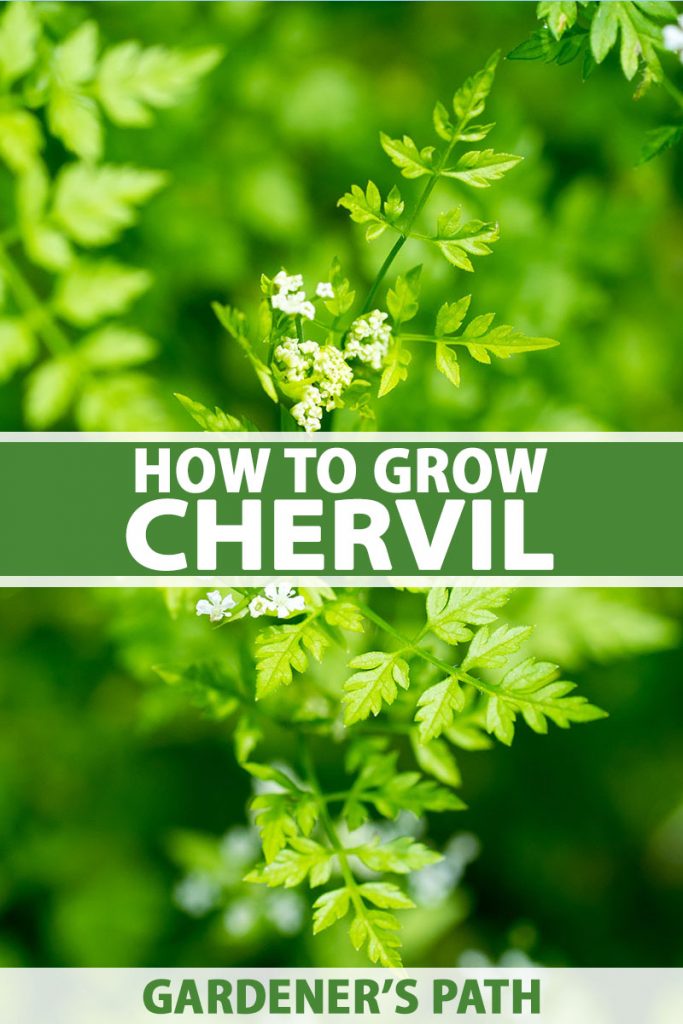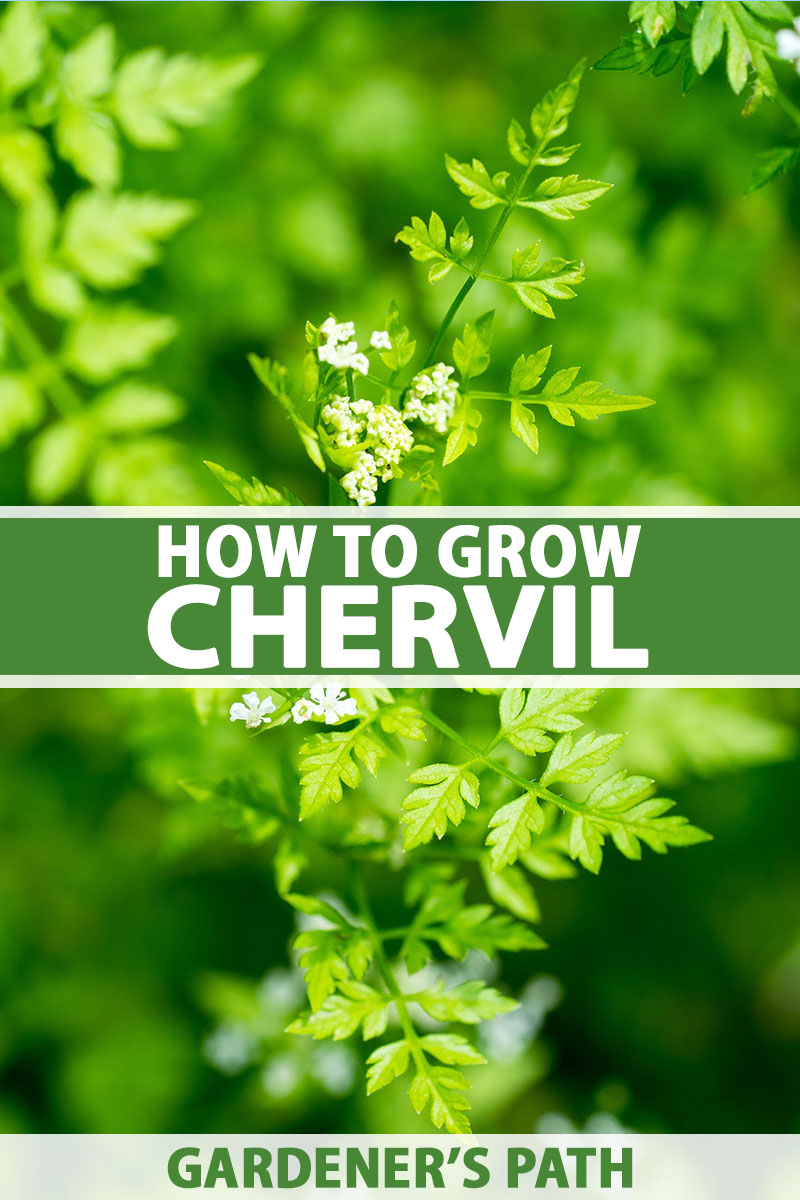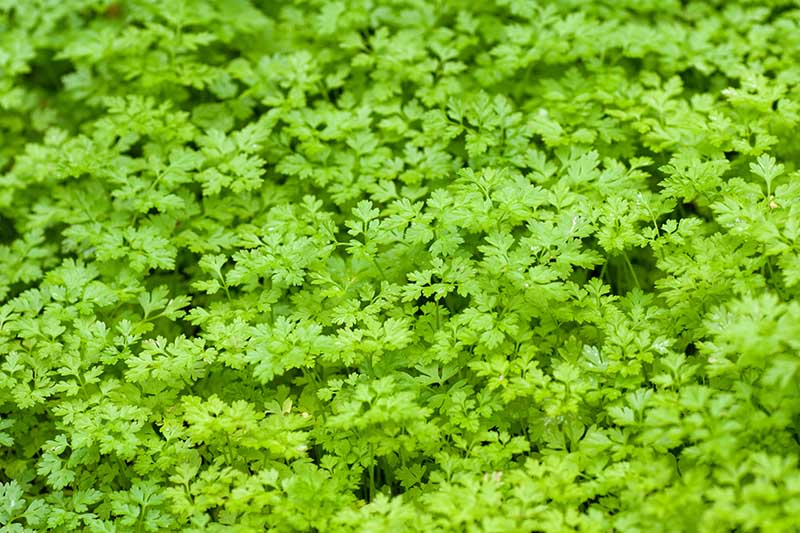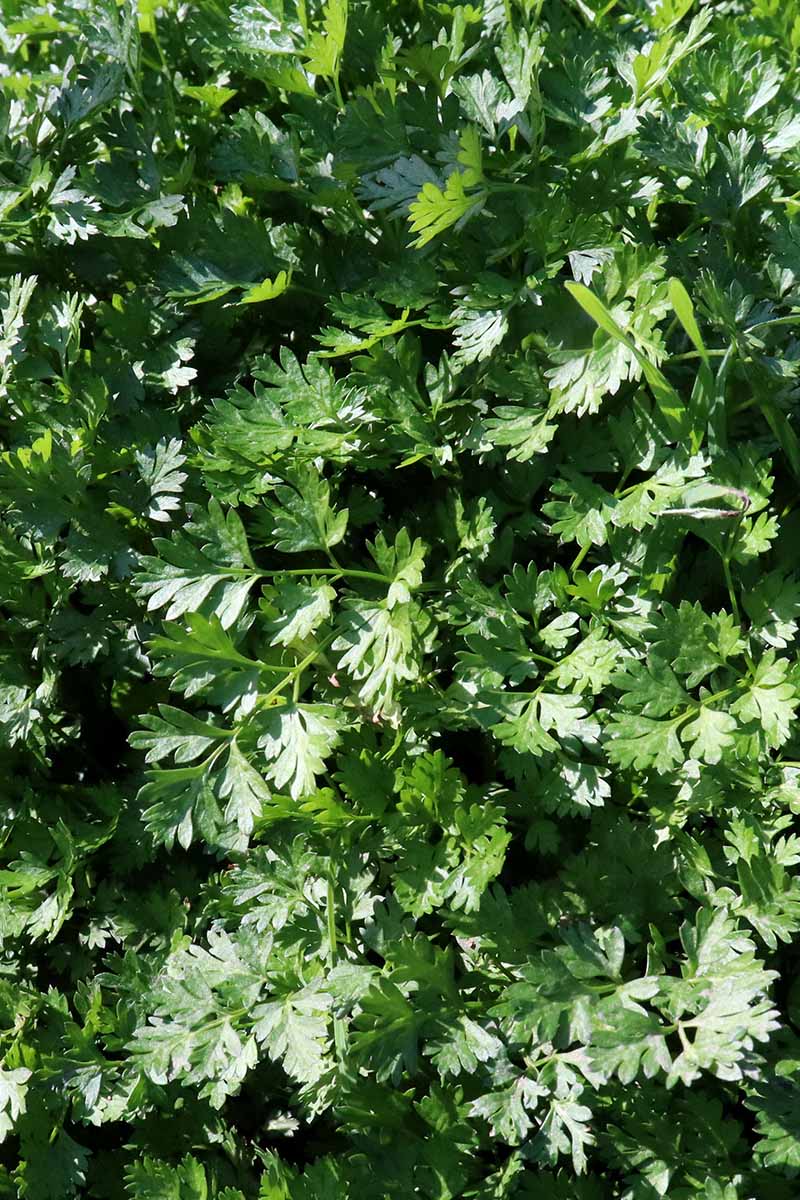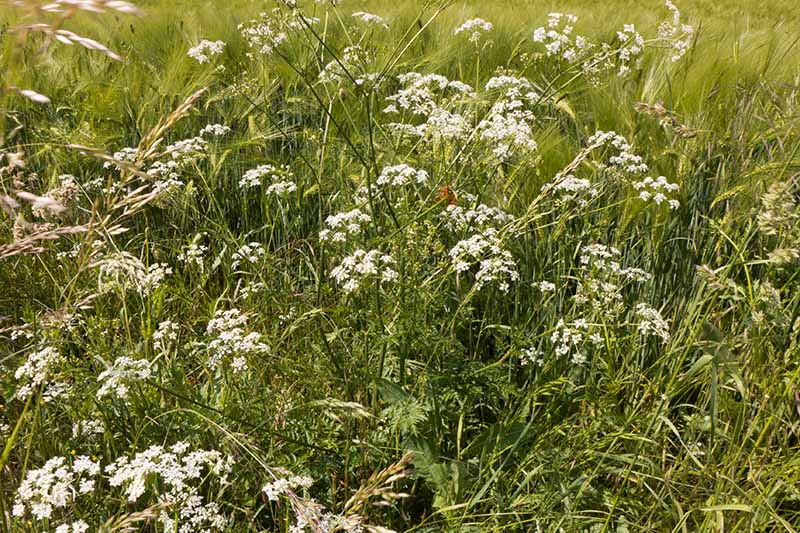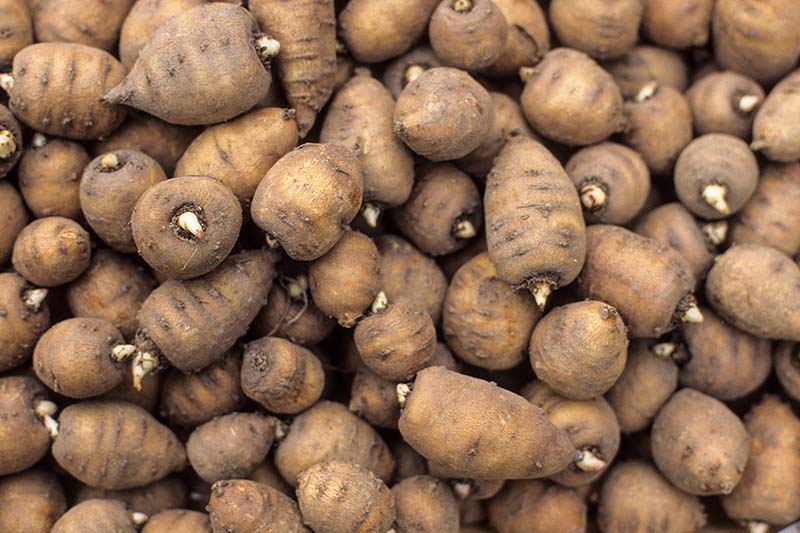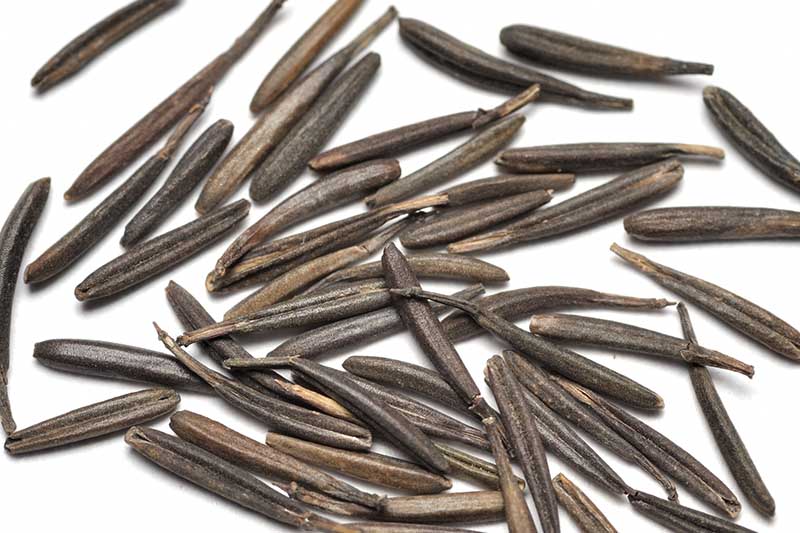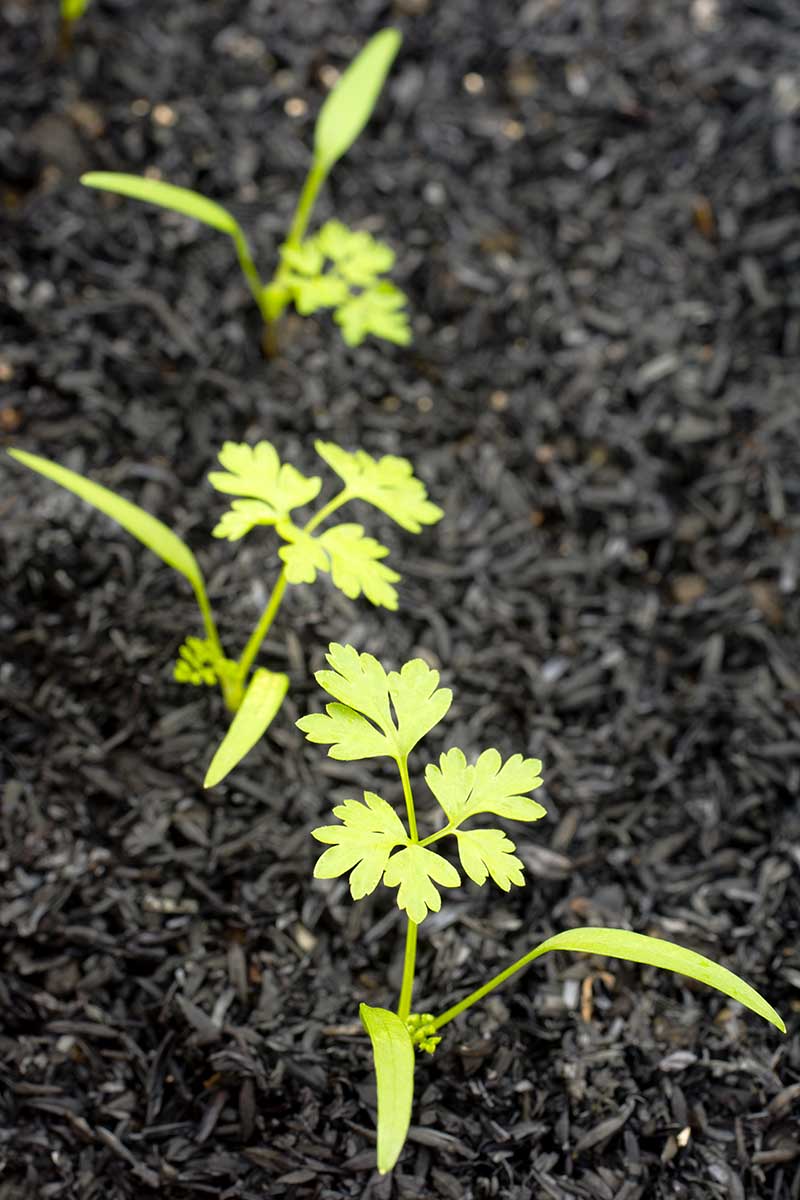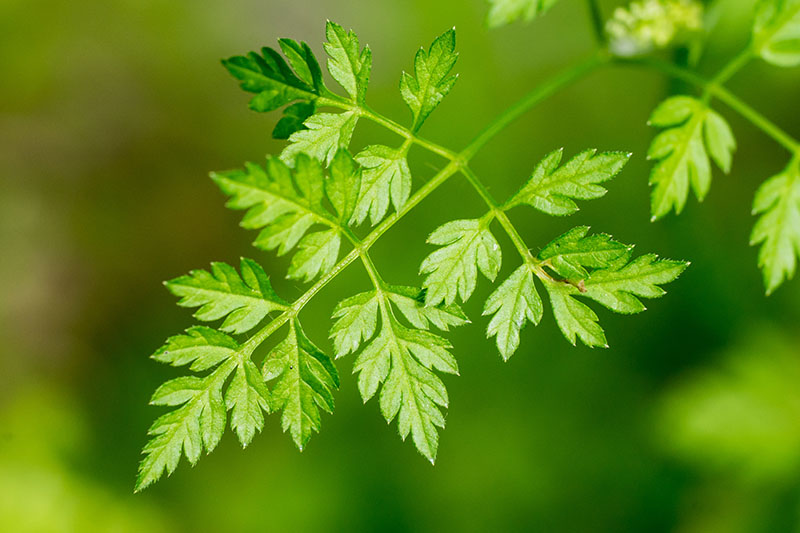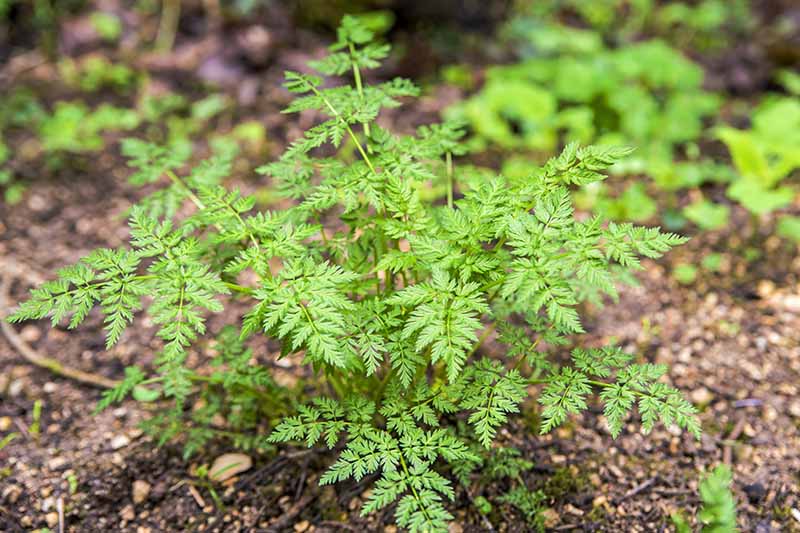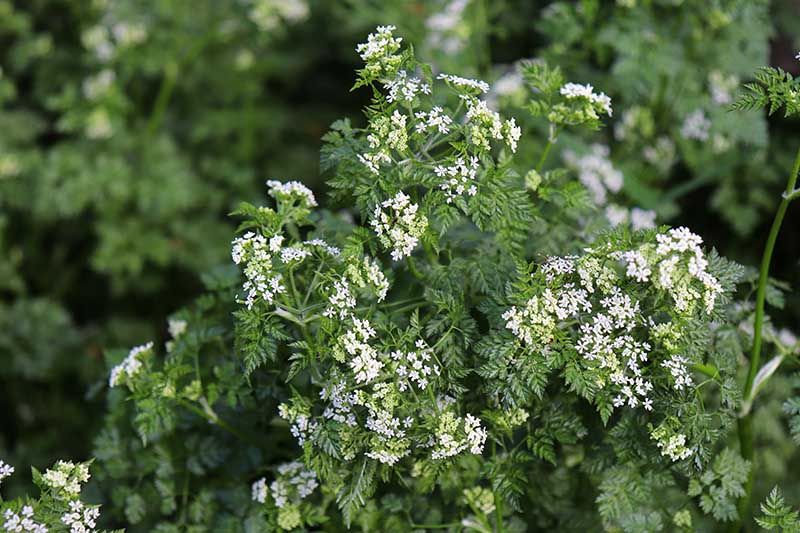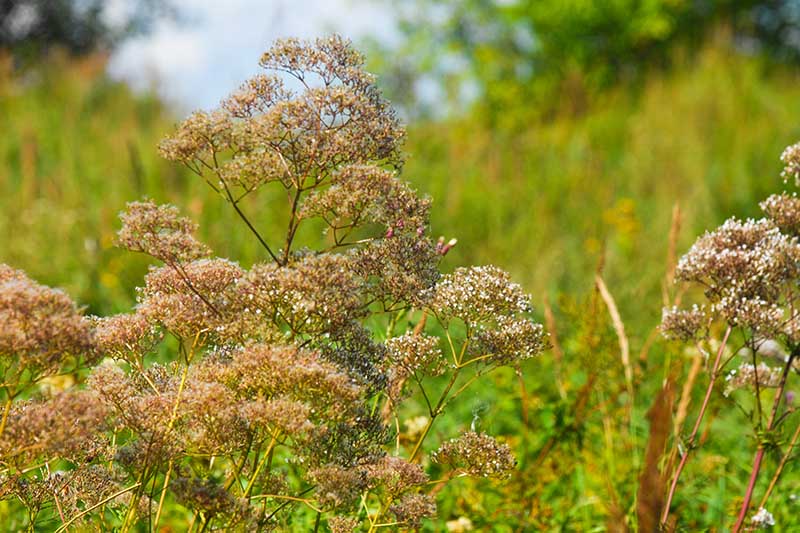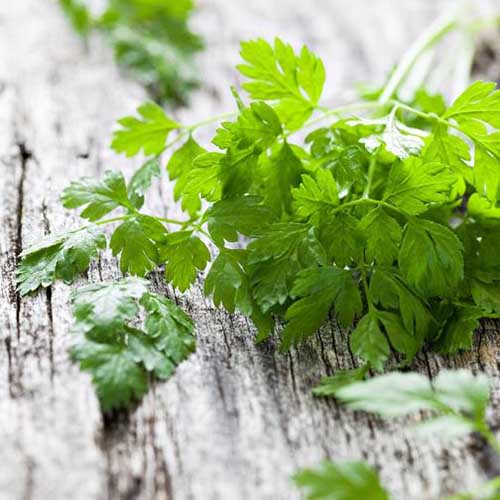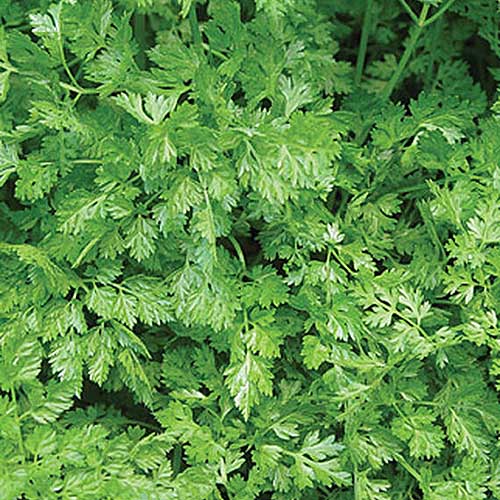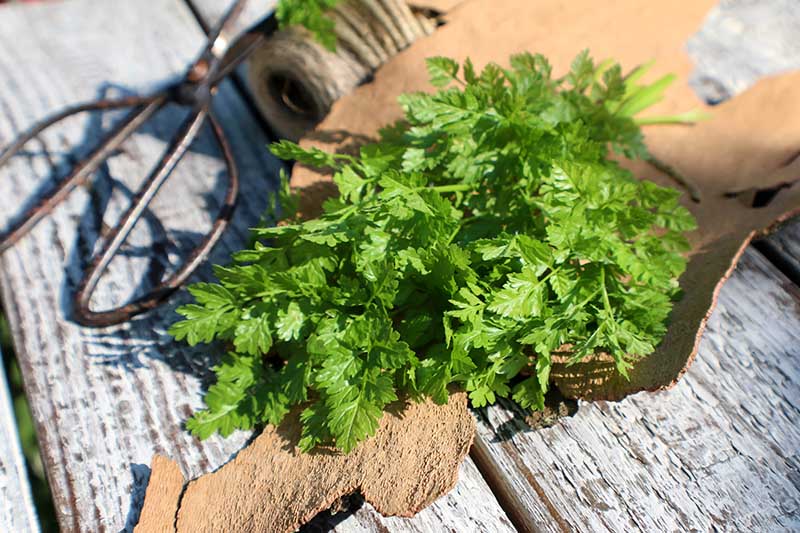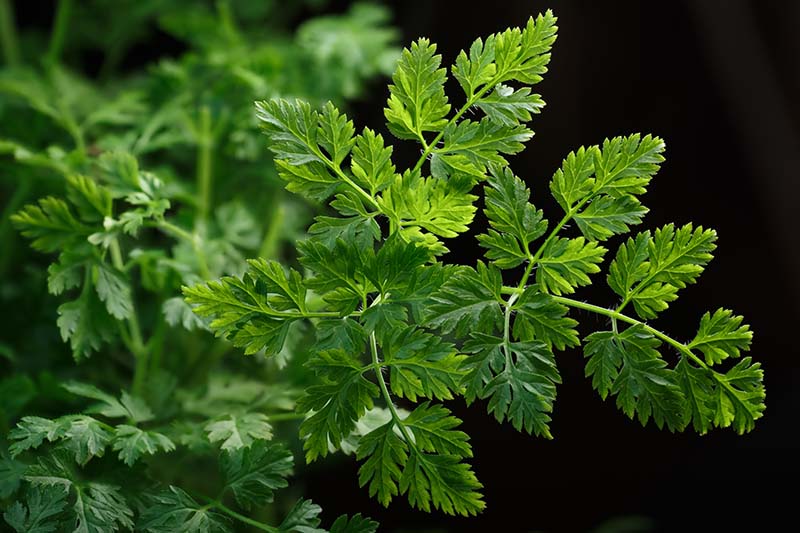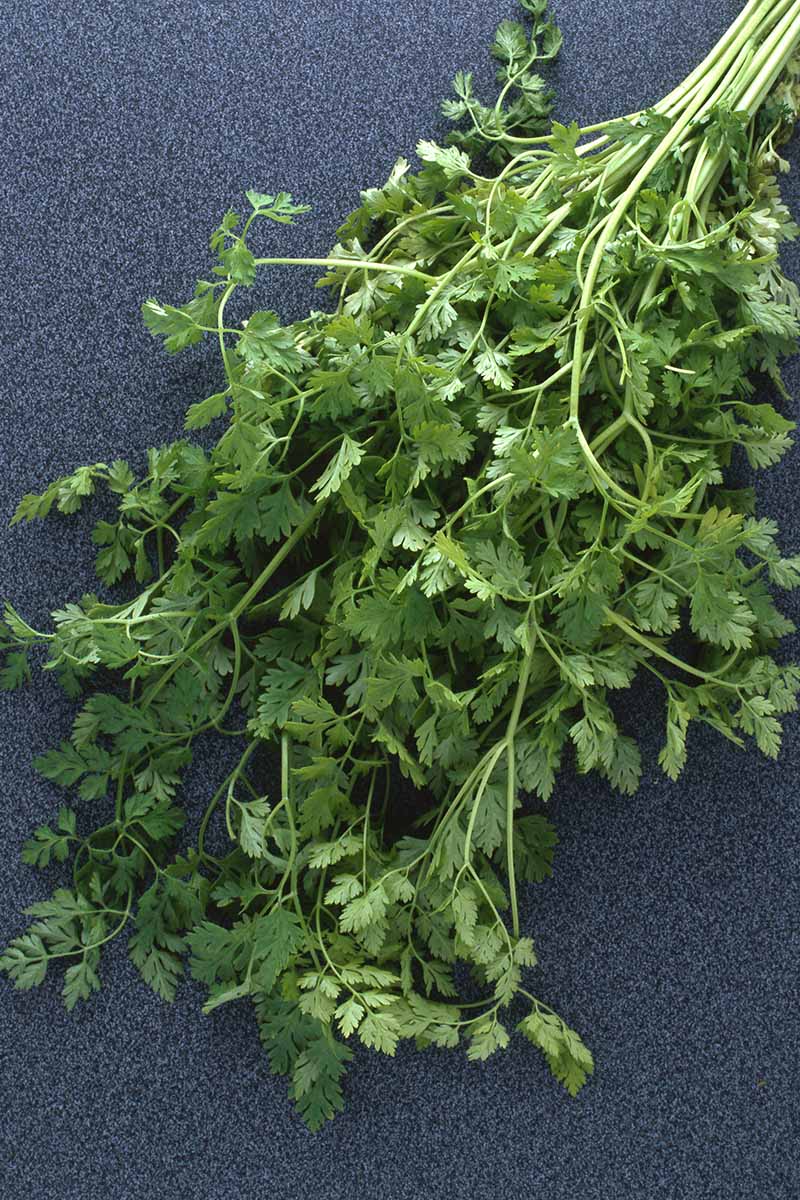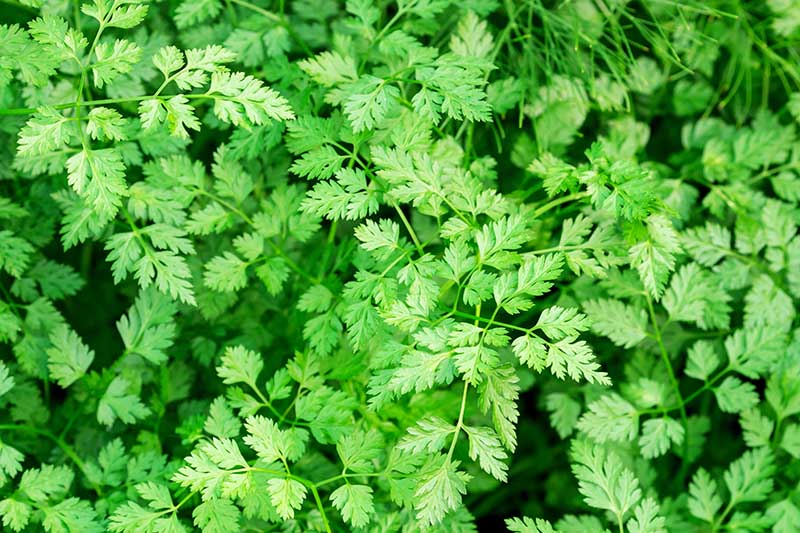It has a unique, peppery, sweet flavor that tastes a bit like parsley, fennel, and licorice combined. While its cousin parsley is a superstar in the kitchen (note that both herbs are members of the Apiaceae or umbellifer family), chervil is the refined sidekick that doesn’t typically get as much attention. We link to vendors to help you find relevant products. If you buy from one of our links, we may earn a commission. You may also hear it called French parsley or rich man’s parsley. It’s occasionally referred to as sweet cicely, but it shouldn’t be confused with the plant Myrrhis odorata, which is also commonly known as “sweet chervil.” The terms “garden” or “salad” placed before the word “chervil” also help to distinguish A. cerefolium from other plants that sometimes go by this common name.
Chervil is one of the herbs commonly found in combinations of fines herbes, a blend that is central to classic French cooking. The mixture also includes parsley, tarragon, and chives. More common in Europe, I think chervil deserves a more prominent spot in home gardens in the US. Let’s get started – it’s time to learn everything you need to know to grow it at home.
Cultivation and History
Chervil is native to Russia, central Asia, and southern Europe, where it can be found growing like a weed on the sides of roads. Ancient Greeks and Romans used the herb for culinary and medicinal purposes.
The 17th century herbalist Nicholas Culpeper mentions it in his book “Culpeper’s English Physician and Complete Herbal,” making reference to its anti-inflammatory properties. By the late 1500s, it was cultivated in England and western Europe. Today, it’s particularly popular in France. It’s pronounced chər-vəl, with a hard “ch” sound, but you’ll often hear it mispronounced sher-vil. This feathery, fern-like herb grows to be about two feet tall at maturity, with light or dark green leaves resembling parsley. Like other umbellifers, chervil has a long taproot. In the late spring, small white flowers that grow in umbels emerge. This herb prefers cooler weather and thrives in USDA Hardiness Zones 3-7. In warm climates, Zones 8-10, you can grow it during the winter – it won’t survive in the summer months here. In addition to sweet cicely, there are a few other plants that often get mixed up with chervil. Wild chervil, Anthriscus sylvestris, also known as cow parsley, is another plant in the same genus. Cow parsley is edible and you can sometimes purchase seeds. Be cautious about cultivating it because it’s considered a noxious weed in some parts of the US, including Wisconsin and Washington. Also, don’t confuse salad chervil with turnip-rooted chervil, Chaerophyllum bulbosum. This plant is a root vegetable that is rarely grown in the US, though you may see seeds for sale from time to time. It has edible dark gray or brown roots with white flesh, and can be used much like a carrot in cooking.
Propagation
Chervil has a long, delicate taproot and it doesn’t like to be transplanted. The best way to grow it is to sow seeds directly in the garden. If you happen across transplants at your local nursery, you can just keep them in the container they are growing in, though you’ll get a smaller harvest. Ideally, look for transplants that were grown in a biodegradable peat pot that can be planted directly in the ground, so you won’t have to disturb the roots.
Direct Seed
Sow seeds in the ground when soil temperatures are between 55-65°F and when you know you’ll have two frost-free months ahead. Seeds won’t germinate if the soil is too warm.
In Zones 3-7, direct sow in the early spring, or sow seeds in late fall for plants that pop up the following spring. In Zones 8 and above, sow seeds when daytime temperatures are under 65°F. This plant loves humus-rich, loamy soil. If your soil isn’t naturally nutritious, amend with well-rotted manure or compost. The soil should be well-draining with a pH of around 6.5-7.0. I like to mix seeds with three parts dry sand to help distribute them more evenly. Sprinkle the seed and sand mix over damp soil, aiming for a few seeds per square inch. These seeds need light to germinate, so press them lightly into the surface of the planting area. They take a while to emerge, around 14 days, so be patient.
Keep the soil evenly moist after sowing. Once the seedlings emerge, thin them to 6-8 inches apart. For a continual harvest throughout the growing season, succession sow at 2 to 3-week intervals in locations where temperatures remain above freezing and below 65°F.
From Seed in Containers
Chervil grows well in containers, as long as you keep the soil evenly moist. Because of its low light requirements and preference for a temperate climate, it lends itself nicely to growing indoors on a windowsill.
You’ll need a container that is at least 8 inches wide and a foot deep, to accommodate the taproot. Fill it with a moisture-retaining potting mix that contains peat moss, coconut coir, or perlite. Press two or three seeds into the top of the mix and keep the soil evenly moist. Once the seedlings have emerged and are a few inches tall, thin the seedlings so you have one plant per 8-inch-wide pot.
As a Microgreen
This gourmet herb can also be grown as a microgreen. Fill a shallow plastic tray with soilless seed mix and spread the seeds on top. You want to use about a teaspoon of seeds for a 3-by-6-inch tray. Gently press the seeds into the starting mix, and moisten using a spray bottle. Put a piece of clear plastic over the top and poke a few holes in it for ventilation. Keep evenly moist. After germination, remove the plastic. Place the container in a location where it will get about 4 hours of sunlight a day, either indoors or out. Keep the sprouts evenly moist, but not waterlogged. After about 20 days, they should be a few inches tall. You can harvest microgreens by cutting them down to the soil line. Read more about growing microgreens here.
How to Grow
Chervil has a few essential requirements once it’s established. Namely, it needs to be kept moist and cool. This plant bolts when it gets warm, and drought can rapidly kill it, cause it to bolt, or turn the leaves bitter.
Plant it in a partially shaded location where it will get about four hours of full sun a day, avoiding the heat of the midday sun. It will thrive in full shade in warmer areas, and can handle a little more sun in cooler regions. Water at the base of plants, and add a two-inch layer of organic mulch around your plants to retain moisture. If the top 1/2 inch of the soil has dried out, it’s time to water, because chervil likes to stay evenly moist.
You don’t want to overwater, however. The soil should never be soggy or saturated. Plants growing in a container should be handled the same way, but you’ll need to use extra care to make sure the soil doesn’t dry out. Self-watering containers are ideal. Snip any flower buds as they emerge if you want to extend the leaf harvest. Flowers generally appear in May or June in the second year of growth, as the weather begins to warm up.
As biennial plants, the leaves don’t taste as good in the second year of growth, as the plant is putting energy into flower and seed production. You can either pull them up and plant fresh, or allow them to go to seed for next year. To save seeds from your plants, wait until the flower heads have dried and turned brown. Snip off the flower heads and place in a cool, dry place until they are completely dry. Rub the flower heads between your thumb and forefinger to remove the seeds. Sow immediately, or store in a cool, dry place. Stored properly, seeds will remain viable for 1-4 years. Chervil has a short lifespan, and if you added plenty of organic matter to the soil at planting time, you shouldn’t need additional fertilizer. However, if you are growing in containers, you can add a liquid fertilizer at half strength every four weeks starting after the plant is four weeks old. Plant with mint, pansies, or radishes. These plants have similar soil and light requirements.
Growing Tips
Chervil is a cool weather plant that doesn’t do well with too much sun. If you want it to thrive, follow these tips for an abundant harvest:
Grow in part shade in most areas. Chervil can handle part sun in cool regions that stay under 65°F during the growing season, and should be planted in full shade in areas where temps climb above 80°F.
Keep the soil evenly moist but not waterlogged.
Cultivars and Varieties to Select
The following cultivars are worth checking out:
Brussels Winter
This variety can handle even colder temperatures than the common type, withstanding a brief, heavy frost. It’s a flat-leaf variety that regrows quickly after cutting. It’s slower to bolt than other varieties and matures in 60 days. It’s ready to harvest in 40 days.
Common
This is the most common type available, the species variety of garden chervil.
Anthriscus cerefolium It matures in six weeks, and will withstand light frosts. You can find packets of seeds in a variety of sizes available at Eden Brothers.
Crispum
‘Crispum,’ also called ‘Curled,’ has lacy, dark, curled leaves. With a milder flavor than the common variety, it makes an ideal addition to salads or sandwiches.
‘Crispum’ This variety matures in 6 weeks. You can find packets of 775 seeds available at Burpee.
Vertissimo
‘Vertissimo’ has darker leaves than the common species plant, and it grows in dense, compact clumps.
Managing Pests and Disease
Chervil doesn’t usually suffer many problems. There are just a few pests and diseases to keep an eye out for.
Pests
Aphids and slugs are known to make a meal out of chervil now and then. Both are easily addressed, if you catch them early.
Aphids
Aphids suck the sap out of plants at all stages of their growth, and a large enough infestation can stunt or even kill a plant. Knock aphids off the plant with a strong spray of water from the hose. Use insecticidal soap or neem oil according to the manufacturer’s directions if an infestation persists. You can learn more about how to manage aphids in our guide.
Snails and Slugs
Chervil favors a cool, shady environment, which is also conducive to slugs and snails. Slugs and snails like to eat the young seedlings, but generally ignore mature plants. Control these pests by hand picking in the morning or evening when you see them. You can also use diatomaceous earth sprinkled around plants. Bait traps filled with beer also work well over time, and if that fails, you can try slug pellets. Be sure to select ones that are safe for use around pets and people. Read more about ridding your garden of slugs and snails.
Disease
The only diseases that tend to bother this herb are fungal, and even those are infrequent. Monitor your plants to catch any signs of disease early.
Fusarium Root Rot
Root rot is a disease caused by soil-borne Fusarium spp. fungi that attack a plant through the roots. In chervil, it shows up first as wilting foliage. You may also see yellowing of the lower leaves, which will then turn brown and die. There is no cure, so you’ll need to pull the plant and destroy it. It can overwinter in the soil, so rotate your crops. Avoid planting anything in the Apiaceae family in that spot for at least five years if your plants have suffered from this disease.
Powdery Mildew
Powdery mildew can be caused by various different types of fungi. If your plants have it, a powdery white mildew that looks a bit like flour will form on the leaves. This disease attacks in the summer when temperatures are around 70-80°F, just when chervil is starting to go to seed and is putting less energy into foliar growth. If you find that it’s a problem, trim away infected leaves and spray the plant with a homemade mixture of 1 tablespoon baking soda, 1 teaspoon dish soap, and 4 cups water. Read more about treating powdery mildew attacks here.
Harvesting
Chervil leaves are tastiest when they are young. Snip off an entire branch at the base as needed, aiming to harvest the leaves while they are still small. If you happen to miss a few leaves and they reach their full size, no worries. They taste delicious, too, if a bit less flavorful. Once the leaves start to turn bronze or purple, they lose their flavor and turn bitter.
You can even cut the entire plant to the ground and it will return for continual harvests throughout the season. New shoots will continue to emerge until the weather gets warm and the plant flowers and goes to seed. Once the plant bolts, the leaves become bitter. Harvest the outer leaves often to encourage bushier growth. New growth emerges from the center of the plant, so pluck leaves down to the leaf node from the outside of the plant. Leaves are generally ready to be picked starting six weeks after planting seeds.
Preserving
Wait to wash your harvest until just before you plan to use it, since wet leaves can rot in the refrigerator. Put them in a sealed container or plastic bag in the fridge, where they will keep for about 3 days.
Chervil is mild and shouldn’t be cooked. Fresh or dried, it’s best added as a final seasoning or garnish for hot dishes. It doesn’t retain much of its flavor when it’s dried, but if you have a large harvest, you can place the leaves in a single layer on a screen in a cool, well-ventilated area. When they are dry and crisp, crumble the leaves and put them in a glass container with a lid. The leaves freeze well. Rinse the herbs and chop them up finely. Then fill an ice cube tray with the chopped leaves and add a little water. Place the tray in the freezer. Once they’re frozen, move the cubes into a sealed freezer bag. You can toss the cubes as needed into dishes like chilled soups and dips. You can also freeze bunches of leaves. Wash and dry the herbs and bundle them together. Place them in a freezer bag. This method works better than frozen cubes for use in dishes that won’t benefit from additional water.
Recipes and Cooking Ideas
Chervil is a nutritious plant, with high levels of potassium, as well as vitamins A and C. Make sure you check out our guide: “5 of the Best Ways to Freeze Fresh Herbs.” This herb is famous as an ingredient in bearnaise sauce, but it also works well in egg dishes, salads, as a topping for fish, on potatoes, or on sliced garden-fresh tomatoes.
You can learn more about how to use chervil in your cooking on our sister site, Foodal. The microgreens are delicious as an addition to salads or as a topping for soup and omelets. Chervil has a very mild flavor, so I will emphasize again that you generally don’t want to cook it – it’s best to toss it into your hot dishes at the last minute. Make an herbed compound butter by chopping up a tablespoon of leaves and mixing them into a softened half cup of butter. You can do the same with mayonnaise. You can also make chervil into a pesto, or put the leaves in white wine vinegar to make an herbed vinegar.
Quick Reference Growing Guide
Chervil Deserves a Spot in Your Garden
In the early spring, when everything else is just waking up, I know I’ll have the grassy (in a good way) flavor of chervil waiting to be tossed into my dishes. Now you can, too. When it comes to herbs, this really is an undemanding plant. It doesn’t need babying or protection from a ton of pests and diseases.
All you have to do is avoid the heat, give it some water, and it will reward you with months of harvest. That’s why I think it’s time we give chervil the attention it deserves in our gardens and kitchens! (Okay, I’m stepping off my soapbox…). Have you cooked with chervil before? How do you like to use it? Let me know in the comments. While you’re at it, check out these other lesser-known herbs that deserve some time in the spotlight:
Growing Lovage: An Uncommon Herb with Many Uses How to Grow Stinging Nettle in Your Garden How to Plant and Grow Purslane

